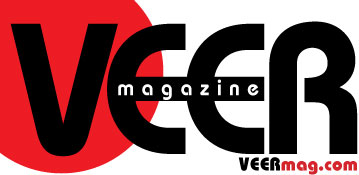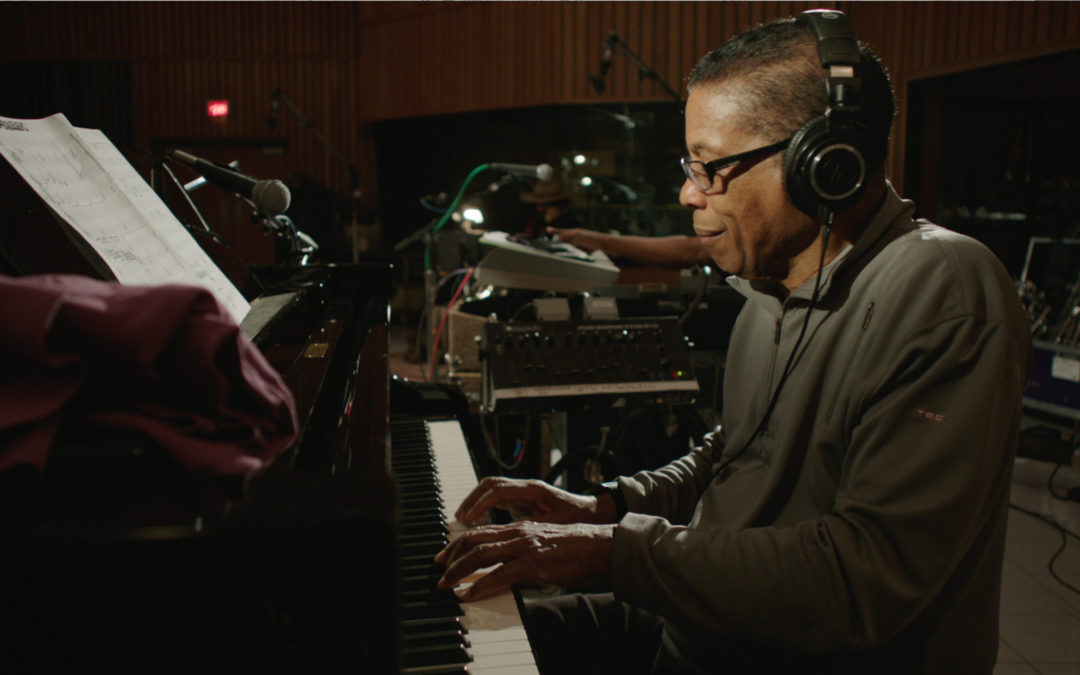By Tench Phillips, Naro Cinema
It’s been a rewarding summer for a greying audience of baby boomers who have been rediscovering their hippie roots from the sixties and seventies. I’m not referring to CBD oil. The Naro has shown a number of new documentaries featuring legendary musicians and historic music events. These films are an ideal tonic for shedding a lifetime of collected baggage, and for easing our transition into elderhood. We can draw strength and inspiration from the musicians we emulated in our youth and who are still vital today.
I grew up in the Norfolk suburbs during the sixties listening to the top hit songs on WNOR and WGH on my transistor AM radio. It was an exciting time for experiencing the innovative and eclectic new music of the British pop invasion, the California Laurel Canyon sound, new folk and Americana, along with Detroit Motown soul music. We collected albums, analyzed the meaning of the lyrics, and danced to the sounds of DJs and live cover bands ’til the wee hours at local teen clubs and high school bashes. It was a golden era of novelty and discovery.
But there was one genre that I wasn’t exposed to in my youth – the exciting new sound of jazz and bebop that was drawing audiences in the big cities. Jazz wasn’t often heard on the local airways that I remember, and the record albums I saw in the store bins seemed too serious and esoteric for my pop musical tastes. I only became acquainted with many of the great jazz albums of the era in later years by listening to Jae Sinnett’s local NPR show and by streaming jazz artists online.
There’s a learning curve to initially take a deep dive into jazz, just as would be demanded to fully appreciate European classical music. So I offer a little historical background. Jazz evolved out of the early Afro-Carribean music that was emerging out of New Orleans during the late 1800s. These were African rhythms first brought to the New World by enslaved Africans who were kidnapped and shipped to the West Indies in present-day Haiti, Dominican Republic, Cuba, Jamaica, and Puerto Rico. The slave population greatly outnumbered the ruling whites in the Caribbean, and during the early 1800s, the enslaved people rose up in rebellion, gaining their liberation on many islands some decades before emancipation in the U.S.
When the free Haitians arrived in New Orleans during the mid 1800s, they brought with them their spiritual practice, Voodoo. The religion practiced rituals and dances that channeled the Orixas, the African black gods in exile. The free Cubans brought habanera or conga music to the port city. The diverse music styles blended into a rich and eclectic gumbo.
Up until reconstruction, Africans who were enslaved in the Southern states were forbid by their capitalist masters to use percussion instruments to recreate their ancient rhythms. And so they used their voices and bodies to channel the muse in their spirituals. When they succumbed to the rigid white Christianity that was forced upon them, they simply transformed the Biblical language and hymns into swinging Gospel choirs.
New Orleans was an exception to the majority of the South in that it allowed for some liberties for slaves and free blacks on Sundays in Congo Park to trade their hand-made crafts and to play music. It was a melting pot for musical traditions from diverse African cultures that were brought to Latin America. In New Orleans, rhythmic percussion instruments were condoned by the urban whites – and that’s all it took for the early synthesis of African music. With the addition of wind instruments like horns, clarinet, and strings instruments like the banjo and the piano, the sound of dixieland and early jazz was born.
Over the proceeding decades, early New Orleans jazz evolved and migrated north to the clubs in Chicago, Kansas City, St Louis, New York, and Los Angeles. The shifting musical styles, rhythms, and melodies were later grouped by jazz fans and designated as ragtime, creole, swing, boogie-woogie, and various latin jazz. The big band swing music came later in the thirties and forties, and were popularized during the Second World War.
During the post-war years, many of the big bands lost favor and faded quickly, leaving only the most famous bands and orchestras to continue and thrive. But there was a new music sprouting up in the smoky jazz clubs in New York. It was a serious and intimate new listening jazz called bebop performed by such diverse artists as Miles Davis, John Coltrane, Bud Powell, Thelonius Monk, and Art Blakey. The music was complex with shifting rhythms at the core of intricate harmonies and melodies.
Bebop and hard bop were less based upon Western music codes of harmony and melody. The musicians took turns playing long solos, improvising intense riffs and sounds, as if possessed by the African gods. They seemed to enter into another state of being while performing. The audience listened intently enough to join into the improviser’s trance. It was understood to be the task of the listener, to join in with the musician’s act of creation.
But these trail-blazing musicians paid a price for the enormous concentration they attained. Their modern mental music left the dancers behind. So it’s no coincidence that at the same time that bebop began growing and changing in the mid-forties, that rhythm and blues made its appearance. The dancers needed to inhabit the rhythm with their whole bodies, and so the hip new dance music evolved to accommodate them. Soon American youths fell under the spell, and the African rhythm tradition was appropriated by white culture during the fifties and evolved into rock ’n’ roll. In contrast, black musicians retained their creative leadership in jazz over the years, but attracted a much smaller audience.
The sound of American jazz spread worldwide in the 20s and 30s with the breakthrough technology of 78 rpm record albums along with the invention of radio broadcasting. Europeans were particularly enamored with the new Negro music coming out of the American South. The African-American rhythms subverted the classical musical tradition and offered young people an alternative to the rigid and conforming ways of thinking and moving that were being forced upon them from above by the fascist military regimes. By the later thirties, American jazz was outright banned in Nazi Germany.
Two young German friends who grew up in Berlin, Alfred Lion and Francis Wolff, were passionate about the new music coming out of America during the late twenties. As Jews, they had the foresight, fortitude, and good fortune to be able to seek refuge from the coming apocalypse. They immigrated separately during the thirties to the U.S. while it was still possible. They reunited in New York City and immersed themselves in the new jazz scene. With only their love of the music and without any production experience, they went on to found Blue Note Records in 1939. They began to record the artists they were hearing perform in small venues and cafes for the benefit of their small circle of friends.
The first company albums were made and mixed by long-time Blue Note recording engineer Rudy van Gelder in his parents’ suburban New Jersey home. Only later did Blue Note build its own unique craft-style studio in Englewood Cliffs, New Jersey. Most every company function was done in-house by Alfred, Francis, and Rudy. And the label’s select group of world-class musicians trusted the Blue Note management implicitly to record and market their master performances.
Francis Wolff, who ran the business side of the company, was also the label’s photographer. He immortalized the dark-lit, smoke-filled studio sessions with his powerful black and white portraits of the musicians that were featured on hundreds of iconic Blue Note album covers. Each of the albums was conceived and designed by graphic artist Reid Miles during his decades-long tenure with Blue Note.
At the time, Blue Note Records was unlike any other record company in the country. Alfred and Francis brought the African American musicians into their social circle and considered them as family. This was unheard of at that time. These musicians had grown up experiencing deep cultural racism and cruel discrimination by white America before the passage of civil rights legislation. But Alfred and Francis recognized the true talent and humanity of these musicians. And although the two Jewish immigrants were white Europeans, they were themselves marginalized by the New York City elites.
The camaraderie between the diverse members of the Blue Note family made for extraordinary studio sessions where some of the greatest ‘hard bop’ jazz albums of the fifties and sixties were recorded by such legendary artists as Bud Powell, Horace Silver, Art Blakey, Lou Donaldson, Clifford Brown, Herbie Hancock, Wayne Shorter, Miles Davis, John Coltrane, Thelonious Monk, and dozens more. Many of these musicians maintained close friendships with the Blue Note founders throughout their lives.
The stylish and heartfelt new documentary Blue Note Records: Beyond the Notes, will premiere at the Naro on Wed, Sept 4 in our ongoing New Non-Fiction Film series. The film opens during a recent recording session where a new generation of brilliant young musicians are warming up – Robert Glasper on keyboards, Ambrose Akinmusire on trumpet, Marcus Strickland on tenor saxophone, and Kendrick Scott on drums. These are the members of the Blue Note All-Stars. An establishing shot introduces Don Was in the sound booth, the eclectic musician and producer who also happens to be the most recent president of Blue Note.
Through the on-camera expressions of this new guard of Blue Note musicians, we learn the influence of the greats who proceeded them. “Those artists reflect the times, and what’s going on,” saxophonist Marcus Strickland attests. “As soon as I put on the record, I’m just transported to a certain time or a certain feeling or a certain understanding of the world.” And Robert Glasper asserts “Most of the great art comes out of messed up situations. You just need something to, you know, to be released from that, you know what I mean, to go somewhere. That’s where jazz is born out of.”
There is an ongoing conversation in the film between the featured musicians –the elders, those who are no longer with us, and the new generation. A younger artist, Ali Shaheed Muhammad of the rap group, A Tribe Called Quest, explains why the label’s catalog has now become such a gold mine for DJs and hip hop artists whose recordings make use of creative sampling. Terrance Martin, musician and producer of such hip-hop albums as ‘To Pimp a Butterfly’, the groundbreaking album by rapper Kendrick Lamar, has much to say in his brief on-camera statements in the film. “A lot of the artists that found their home on Blue Note understood that we all had the survival situation in common,” he says, “and that came out through their music. Blue Note is the past, present and the future. It’s always doing something different, it’s always turning on the next generation to something that could change their life.”
The documentary was filmed by Swiss-born filmmaker Sophie Huber, whose previous effort was a profile of the late character actor Harry Dean Stanton: Partly Fiction. She was asked in an interview how she became involved in the Blue Note project. “A friend of mine introduced me to Don Was, the president of Blue Note Records, who is also a legendary musician and record producer. Around the same time, he was approached by the BBC, who wanted to do a documentary for the 75th anniversary of Blue Note. Don suggested me as a director and I then went on to raise money through Swiss government funds, to ensure an independent production. Now, for the 80th anniversary, the film is finally out.” And there are additional anniversary promotions this year, including dozens of vinyl album reissues, branded playlists, and album-cover art prints suitable for framing.
The screening of ‘Blue Note Records: Beyond the Notes’ will include an introduction by Jae Sinnett, host and producer for the award winning ‘Sinnett in Session’ jazz radio show on WHRV FM. As local jazz fans know, Jae is a tireless music educator as well as a drummer and composer with numerous recordings that include the performing ensembles, Zero to 60 Quartet as well as The Americana Groove Project. When I asked Jae about the size of the jazz sector of the record industry today, he responded, “It makes up about 2% of the record sales nationally. Close to classical. The really odd thing is that over 2 million listen to jazz everyday on average on public radio stations across the country but they’re not buying what they hear. They’ll pay to support jazz on their area stations.”
And when I asked Jae if there are as many jazz albums produced today as in the past, he replied, “Yes… much more because it’s easier to record today. Musicians can make records in their living room from their computer. That’s where we are now. I self produce my records on J-Nett Music. The CD is the new business card.”
The consummate jazz artists that Jae seeks out for airplay on his show are continuing in a long musical tradition. It’s an ongoing legacy of artistic ideals – the pursuit of musical freedom, the search for a balance between art and commerce, and the belief in music as a transformative and revolutionary force. The more we learn about the lineage of jazz, the better we can understand and hear the music, and the more we can appreciate the diversity and intimacy of great jazz.




